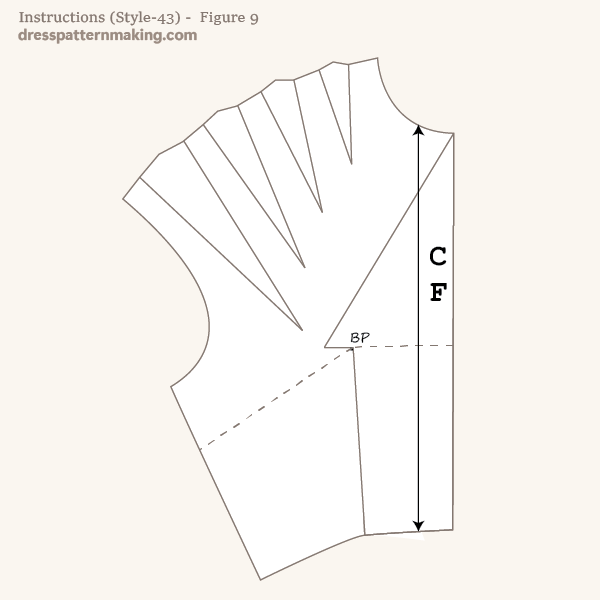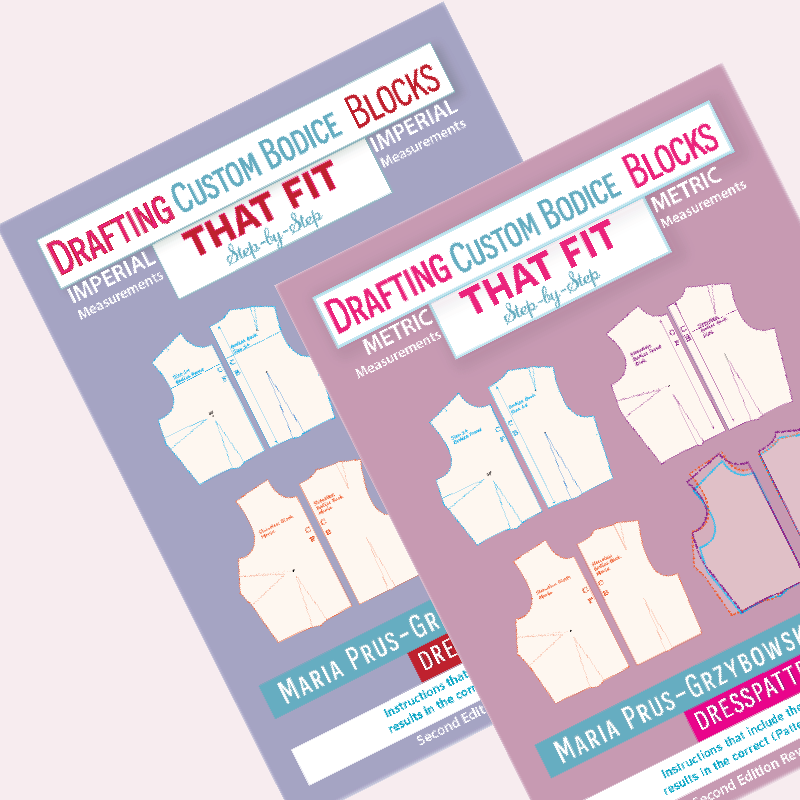Bodice Front Style 43
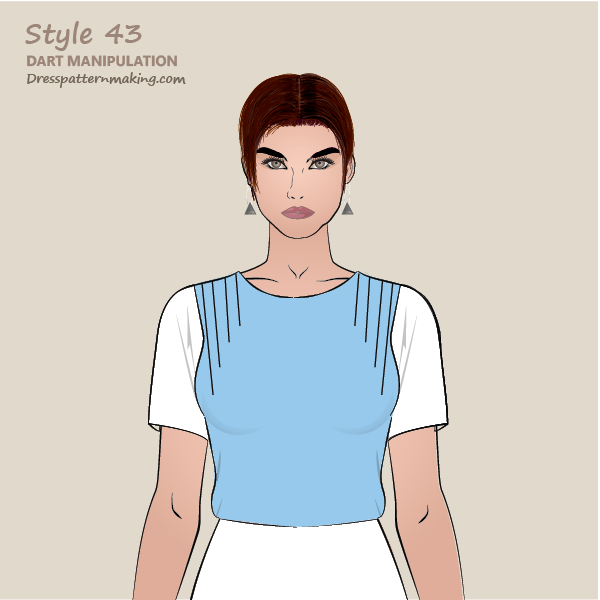
The bodice of this garment has four graduated darts in the shoulder.
Method
With this style, we cannot use the pivoting method used in Styles 27, 28, 29, 30, 33 and etc. This is because the maximum radius of the circle that can be used is 1 inch. Using the maximum radius of 1-inch means that the maximum distance between the end darts on the extreme ends is 2 inches. Using a circle with a radius of more than 1-inch will create too much distortion. In this style, the darts seem regularly spaced, and given the shoulder length, they would be approx 1 inch apart. This means that the distance between the first and last dart is 3 inches, and the pivoting method is not ideal. We will use a cut and spread method to create this style instead.
Example: Outcome
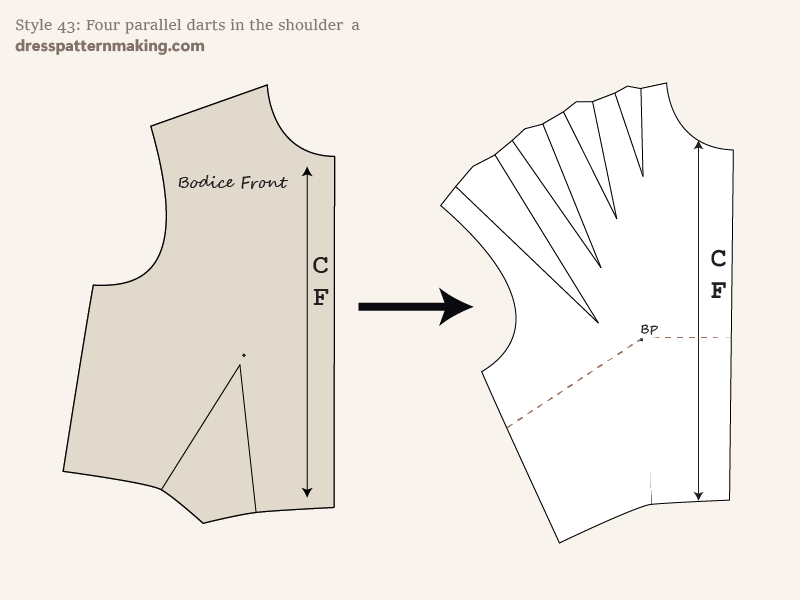
Figure B shows the block being used on the left (1-Dart Block), and the pattern that will be created (Style 44) on the right.
The focus of these instructions is covering the theory and practice of manipulating darts and the exercise finishes after the dart manipulation has been done. For production ready patterns you would need to take further steps to add seam allowance, pattern labels, pattern piece numbers, the grainline, etc.
Instructions (Style-43) - Figure 1
The focus of these instructions is covering the theory and practice of manipulating darts and the exercise finishes after the dart manipulation has been done. For production ready patterns you would need to take further steps to add seam allowance, pattern labels, pattern piece numbers, the grainline, etc.
As you probably don't want to cut up your block, and also because the spreading will be difficult using cardboard, first trace your complete block onto paper, and we will use the paper outline in the rest of these instructions.
- On your traced pattern, draw a line from point A to point B; the line is at right angles to the CF, touches the Bust Point and goes across the whole block.
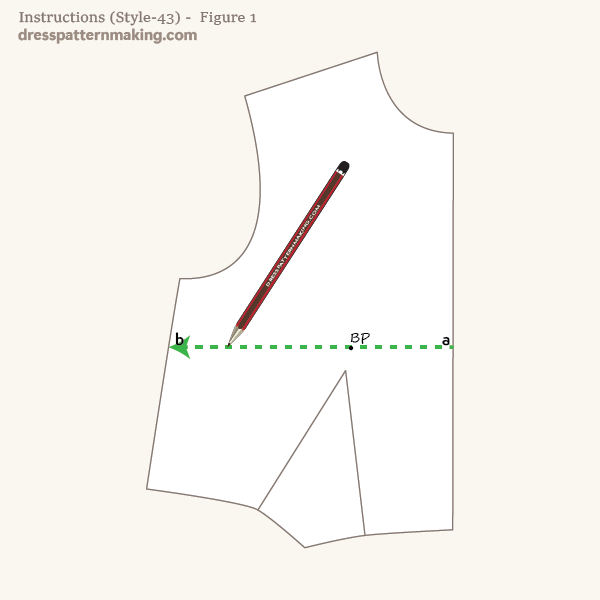
Instructions (Style-43) - Figure 2
- Measure 1-inch to the left of the Bust Point and mark (red arrow in image). This is marked D in the image.
- Draw a line from the CF neck point (marked C) to point D.
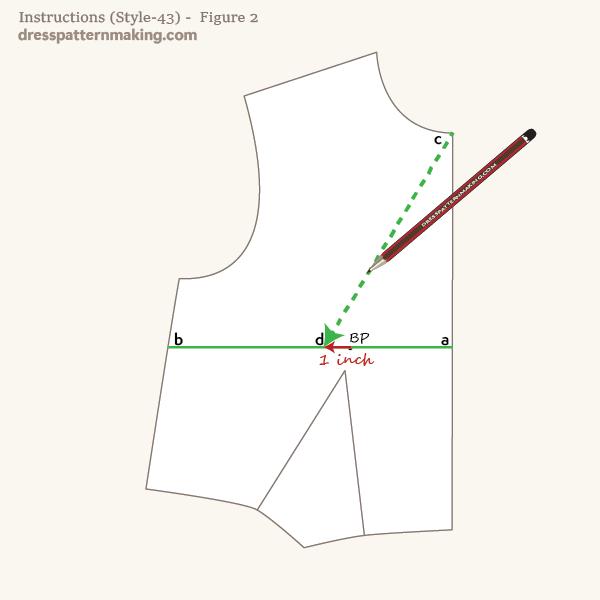
Instructions (Style-43) - Figure 3
- Divide the shoulder length by five and mark the four points for the darts; shown as E, F, G & H in the image.
- Draw lines from points E, F, G & H to the C~D line. These lines should be parallel to each other.
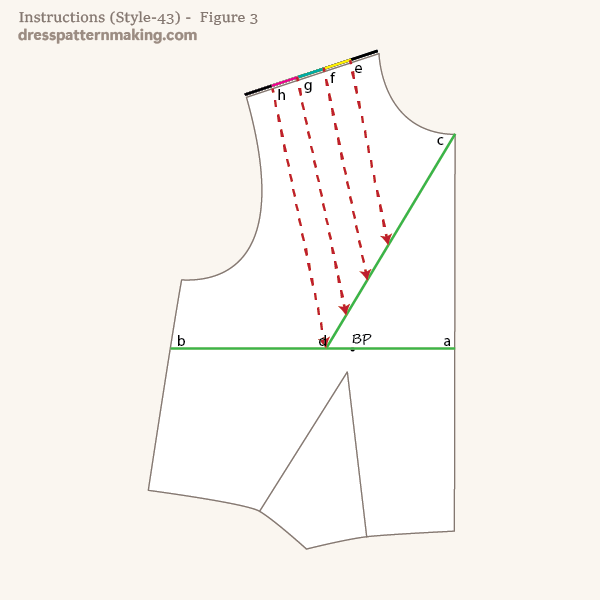
Instructions (Style-43) - Figure 4
This image just shows the two pattern pieces you should now have (held together by a tiny hinge at the Bust Point). The CF piece is highlighted in yellow for emphasis only. We will be pivoting the waist dart closed in the next step; the pivot point will be the Bust Point.

Instructions (Style-43) - Figure 5
- Pivot the waist dart closed, so that dart leg H touches dart leg I.
- Secure the two pieces with sticky-tape.
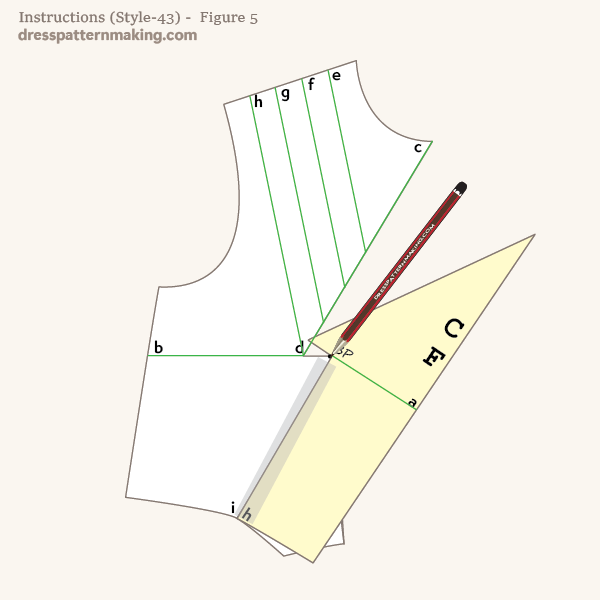
Instructions (Style-43) - Figure 6
- Cut along the dart lines H, G, F & E, from the Shoulder to but not through the C~D line.
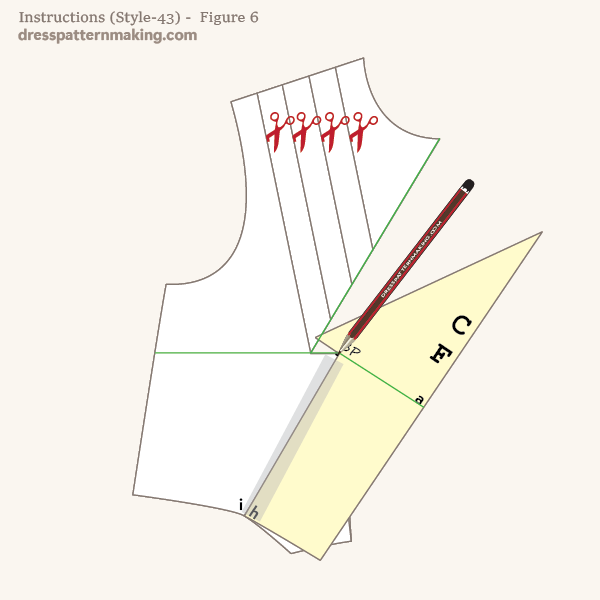
Instructions (Style-43) - Figure 7
- Spread the pieces to create the darts
- The neckline will not meet and will be adjusted in the next step.
- Put some more pattern paper underneath and secure the pieces onto the paper with tape.
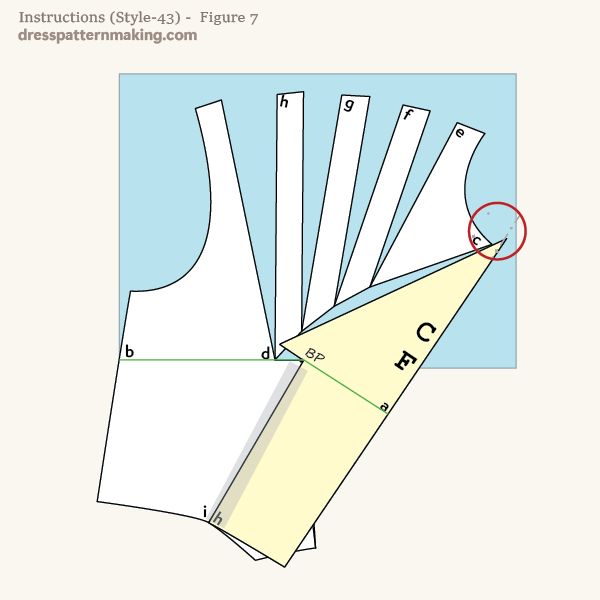
Instructions (Style-43) - Figure 8
- Redraw the neckline.
- Draw the dart legs; as they are graduated, the lengths decrease from the outside in. (Note that the further away from the Bust Point, the further away the Dart Point needs to be).
- Finish off the dart (shown in red in the image).
- Cut out the shape.
- If this was a pattern, you would need to add seam allowance, add the grainline, pattern piece, cutting instructions, etc.
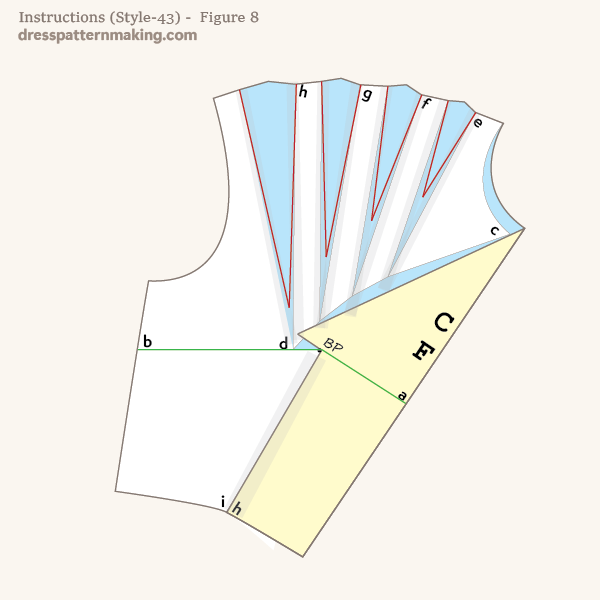
Instructions (Style-43) - Figure 9
This is the result after the dart manipulation is finished.
